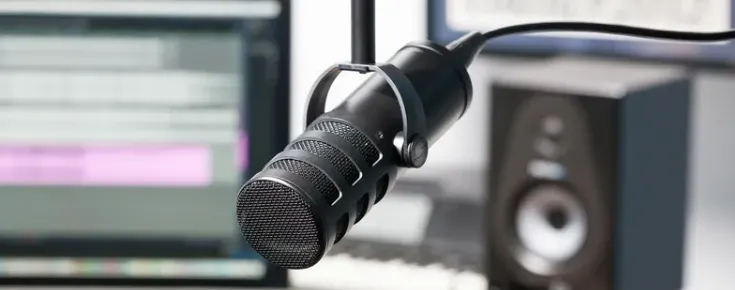Consumers Best Verdict: Samson Highlights
If you want a single-cable setup that doesn’t limit you, this is a sweet spot. Flip patterns for solo voice, duos, or room capture; route a guitar or bass right into the mic; monitor with zero latency—no extra boxes. Build is solid, setup is painless, and the workflow just makes sense. From podcasts and streams to songwriter sketches, the samson g-track pro usb mic keeps the process simple while sounding confidently pro.
Look, after long days and a few late nights with the samson g-track pro usb mic, my takeaway is pretty clear: it still punches above its price in 2025. The onboard instrument input feels like a cheat code for quick demos, the controls are refreshingly tactile, and the sound is clean enough to publish without fuss. It’s not the flashiest or newest, but it’s dependable, flexible, and just easy to live with.
In-Depth Look: Samson Features & Considerations
Core Features & Consumer Benefits
Here’s what stood out in day-to-day use this year.
24-bit/96 kHz capture
Detailed, modern clarity that holds up for podcasts, streams, and vocal/instrument demos without sounding brittle.
Three pickup patterns (cardioid, omni, bidirectional)
Swap from solo voice to across-the-table interviews or two-person talk without changing mics.
Built-in 1/4" instrument input
Track mic and instrument together—great for singer-songwriters who want guitar-and-vocal ideas fast.
Onboard controls and zero-latency monitoring
Physical mic/instrument levels, mute, and monitor mix mean fewer clicks, more focus.
Plug-and-play, sturdy build
Class-compliant with Mac/Windows (and most USB-C tablets/phones with adapters) in a heavy, durable chassis.
Important Considerations & Potential Downsides
- Size and weight
The desk footprint is legit. It’s stable, but not a toss-in-the-bag travel buddy.
- USB-only (no XLR)
Great for simplicity, but less ideal if you want an XLR upgrade path or a multi-preamp interface workflow later.
- Condenser sensitivity
It’ll hear your room. Untreated spaces may need careful placement, a pop filter, and some basic noise control.
- Limited software extras
No fancy companion app or baked-in DSP. You’ll rely on your DAW or streaming software for polish.

Who Is the Samson Best For?
Solo podcasters and streamers
Plug in, pick cardioid, and you’re live with clear voice tone and handy onboard mute.
Singer-songwriters
Capture vocal plus guitar/bass at once via the 1/4" input—perfect for quick, honest demos.
Remote pros and educators
Reliable voice presence for calls, classes, and webinars with zero-latency monitoring.
Small studios on a budget
Solid, flexible sound without needing an interface, extra cables, or a second mic.
Beginner-to-intermediate creators
A forgiving, feature-rich mic that lets you grow without overwhelming you.
Who Might Want to Explore Other Options?
- You want an XLR mic and long-term upgrade path
A dedicated interface plus an XLR condenser or dynamic will scale better.
- You record in noisy rooms
A broadcast-style dynamic USB/XLR hybrid may reject more background in untreated spaces.
- You need ultra-portability
A compact travel mic or clip-on solution is easier to toss in a bag and set up on the go.
- You prefer software-controlled DSP
Consider mics with integrated apps, built-in EQ/comp, and profiles for streaming.
Frequently Asked Questions

Logitech G733 Review: Lightweight Wireless Gaming Comfort
The Logitech G733 LIGHTSPEED wireless gaming headset stands out with its vibrant color options, lightweight design, and focus on comfortable, long-lasting play. It aims to provide a blend of style, performance, and wireless convenience for the modern gamer.









